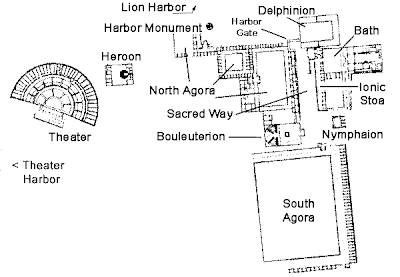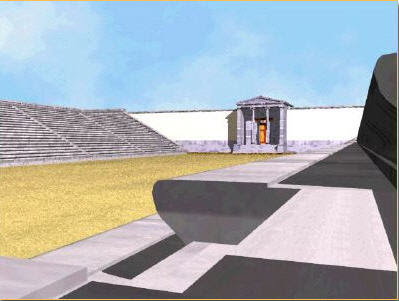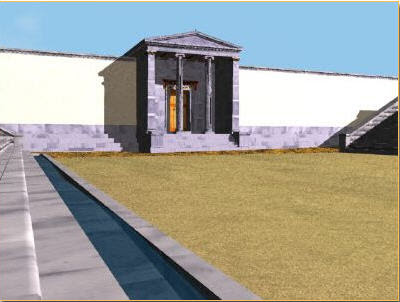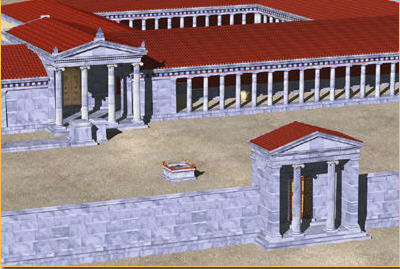
Miletus after 494 BC
Gridded Greek cities were subdivided by a system of wide main roads (plateau) and narrow streets (stenopoi). In most grids the streets intersected at right angles (orthogonal grids). The Greek town also had a complement of public buildings to match that of modern cities today.


The Bouleuterion (Council House)served as an assembly hall for citizens.


The Stadium of Miletus, where athletic games took place.

The Gymnasium of Miletus was a building complex that served athletic, religious and ceremonial purposes.


The Theatre of Miletus was built during the Hellenistic period (4th century BC), and underwent subsequent expansions and modifications up to Late Roman times (2nd century AD).


The North Agora of Miletus was constructed during the rebuilding of the city after its destruction by the Persians in the 5th century BC. It was a trading centre where other public activities also took place, and was subsequently expanded, finally becoming an extended complex with stoas and wide open spaces.

The Delphinion was an open-air sanctuary dedicated to Apollo Delphinios. It also served as the Public Archive of the city.
This is a later view of Miletus:

Picture above from: www.caesar3.it. All other photos from: www.ime.gr
References: www.fofweb.com
Related Post:
|
Social Bookmarking
No comments:
Post a Comment